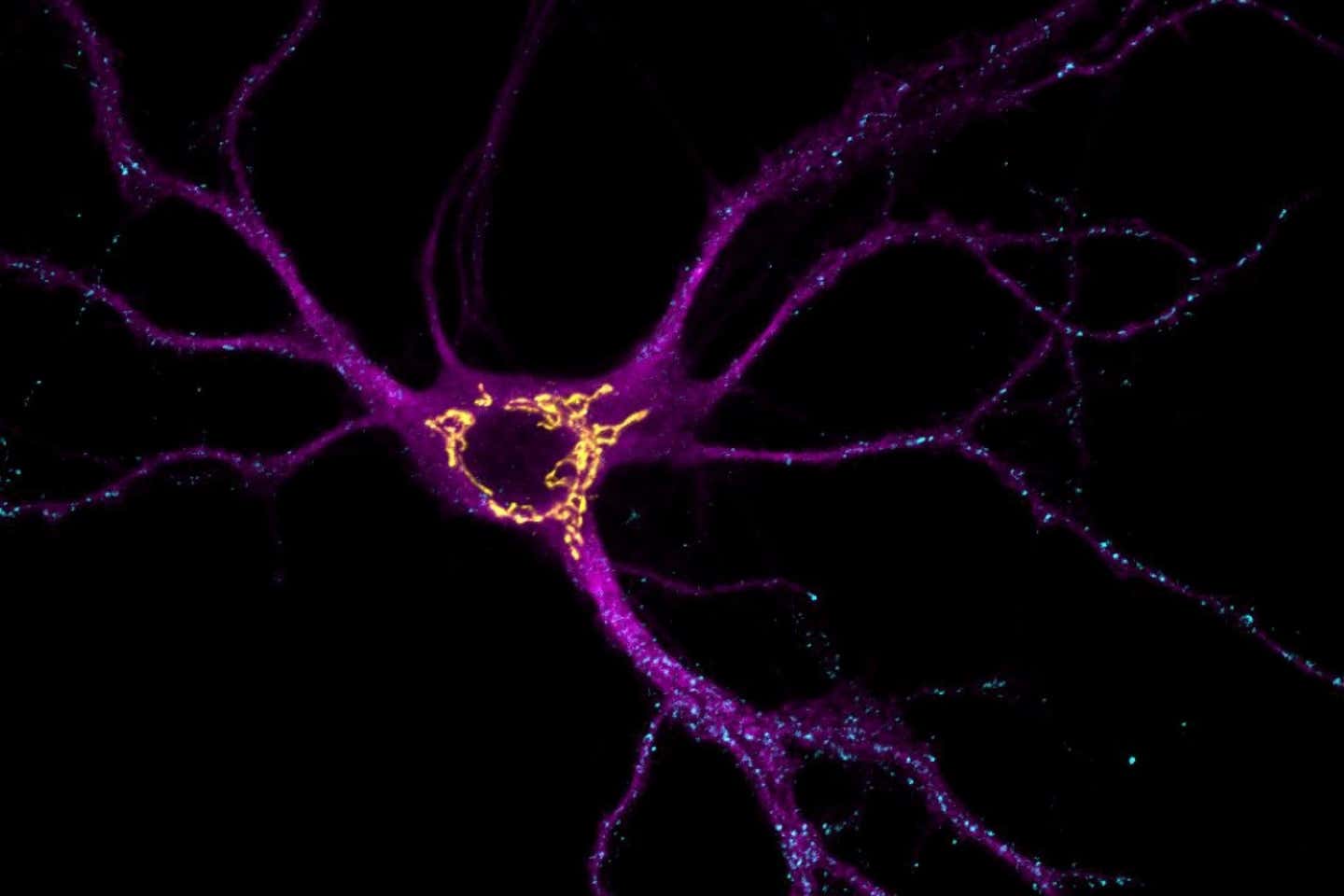Neurons burn fat to keep your brain running and fight disease
Scientists reveal neurons use fat for energy, offering hope for treating hereditary brain disorders like HSP54.

For decades, it was widely accepted that neurons relied exclusively on glucose to fuel their functions in the brain. This is not the case. (CREDIT: The University of Queensland)
Researchers have long believed that neurons rely on glucose nearly entirely for fuel. The brain's enormous energy requirements were presumed to be supplied by sugar alone, in contrast to muscle or liver tissue, which are capable of using fat.
A recent study from the University of Queensland and the University of Helsinki overturned that old presumption. Researchers discovered that neurons are capable of generating and using some fats to power their activity—and that disruption of the process may cause a rare neurological disease known as hereditary spastic paraplegia type 54, or HSP54.
When Sugar Isn't Enough
The brain's messengers, the neurons, are never idle. That task needs huge amounts of energy in the form of ATP, the molecule that powers nearly all cellular processes. The work illustrates how neurons rely on a specialized enzyme, DDHD2, to cut inside fats into saturated free fatty acids—mainly myristic, palmitic, and stearic acids. These lipids are reworked inside mitochondria by the β-oxidation process to yield ATP.
In the cells that lacked the DDHD2 enzyme, researchers observed a clear reduction in mitochondrial energy production—about 20% less than usual. The cells compensated by breaking down more sugar through glycolysis, but that wasn't enough. Their mitochondria were in disarray, ATP levels declined, and communication between neurons started to deteriorate.
“This is a real game-changer,” said Dr. Merja Joensuu of the Australian Institute for Bioengineering and Nanotechnology, who led the study. “We’ve shown that healthy neurons rely on fats for fuel, and when this pathway fails in conditions like HSP54, it may be possible to repair the damage and reverse the neuropathologies.”
A Closer Look at the DDHD2 Enzyme
DDHD2 acts as a biochemical scissor to cut up triglycerides and phospholipids into size-acceptable pieces that can be used for energy. When mutations get in the way of the DDHD2 gene—like they do in people with HSP54—neurons begin to store excess fat droplets that aren't being used.
These buildup points mean that the cells are not able to access the fats that they need. Without that source of fuel, neurons become stressed, their internal transport system fails, and mitochondria become swollen and disorganized.
In mice that had had DDHD2 deleted, scientists observed the same defects: low energy production, disorganized mitochondria, and defective neuron-neuron communication. However, when the scientists supplied the neurons with pre-assembled versions of those critical fatty acids, known as fatty acyl-CoAs, the cells began improving. Within 48 hours, their energy output and mitochondrial structure were greatly improved.
Restoring Power with Fat
To attempt to restore the neurons, the scientists provided DDHD2-deficient neurons with functional versions of myristic, palmitic, and stearic acids. These compounds bypassed the faulty enzyme and delivered energy directly to the mitochondria.
What was next was dramatic: ATP production surged, mitochondria regained healthy shape and size, and even the cell's internal transportation system started working again.
The strongest rescue came from the combination of all three fatty acyl-CoAs at once. Inactivating the mitochondria to import these fats negated the benefits, showing the rescue was dependent on fat oxidation. "The rescue effect was abolished when we blocked fat from going into the mitochondria," Joensuu said. "That taught us this fat metabolism pathway is completely essential."
Repairing Damaged Communication
Neurons don't just need energy—they need it in the right place at the right time. Synapses, where neurons exchange signals, are among the most energy-poor places in the brain. In the DDHD2-deficient neurons, ATP in the synapse dropped by almost 18% even when the neurons were at rest. When active, their ability to regulate energy use sank drastically. This lack of fuel disrupted synaptic vesicle recycling, the process that allows neurons to release and recycle neurotransmitters.
As researchers added the fatty acyl-CoAs, synaptic energy levels rebounded, and neuron-to-neuron communication again became nearly normal. In cells with a human mutation that is linked with HSP54, the same treatment raised ATP levels by about 80% and had restored normal signal transmission.
The researchers also found that without DDHD2, thousands of proteins were made in excess or not enough, throwing off the delicate balance within the neurons. This threw off everything from the mitochondria to the Golgi apparatus, which packages and exports proteins throughout the cell. Delivering the fatty acyl-CoA mixture corrected more than 70% of those protein changes and restored the cell's internal transport system architecture.
These findings involve the benefit of fat supplementation reaches far beyond energy production. They may also reinstates protein homeostasis and cell morphology—both essential to the well-being and survival of neurons.
A New Understanding of the Brain's Energy Economy
Textbooks for years have described the brain as a strict "sugar burner." This study reverses that assumption on its head. It uncovers that potentially as much as one-fifth of a neuron's energy can come from burning fats the neuron manufactures itself. When that fails, as in HSP54, the consequences cascade through all corners of the cell, from mitochondria to synapses.
Dr. Giuseppe Balistreri of the University of Helsinki and a senior author on the paper feels that this has the potential to bring new avenues in the treatment of brain diseases. "We will keep making non-invasive imaging technologies to observe this process in the brain," he said. "This discovery doesn't just rewrite the textbooks—it could change lives."
Practical Implications of the Research
This discovery redefines how scientists think about brain metabolism and suggests the potential to develop new therapies for rare neurological illnesses like HSP54. If techniques can be developed that are safe to administer fatty acyl-CoA or other chemicals to neurons, doctors may one day be able to reverse energy production and stop or reverse neurodegeneration.
It could also prompt investigation of whether fat metabolism plays a role in more common brain disease such as Alzheimer's or Parkinson's.
By the potential to enhance the fat-powered energy pathway of the brain without danger, scientists might release a new way of protecting and repairing the nervous system.
Research findings are available online in the journal Nature Metabolism.
Related Stories
- Scientists discover key enzyme that can protect your brain from Parkinson’s
- Autism may be the price of human brain evolution, study finds
- Powerful new protein treats memory loss and brain injury
Like these kind of feel good stories? Get The Brighter Side of News' newsletter.
Joseph Shavit
Science News Writer, Editor-At-Large and Publisher
Joseph Shavit, based in Los Angeles, is a seasoned science journalist, editor and co-founder of The Brighter Side of News, where he transforms complex discoveries into clear, engaging stories for general readers. With experience at major media groups like Times Mirror and Tribune, he writes with both authority and curiosity. His work spans astronomy, physics, quantum mechanics, climate change, artificial intelligence, health, and medicine. Known for linking breakthroughs to real-world markets, he highlights how research transitions into products and industries that shape daily life.



